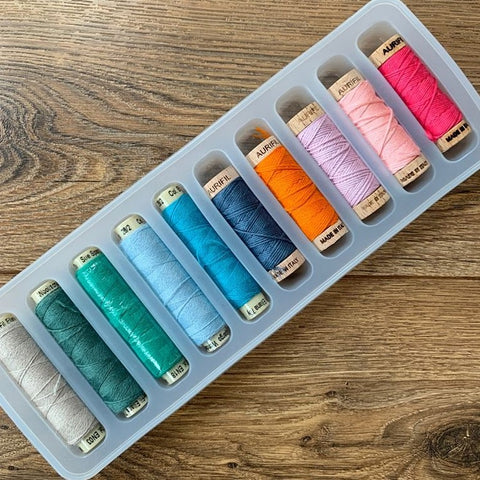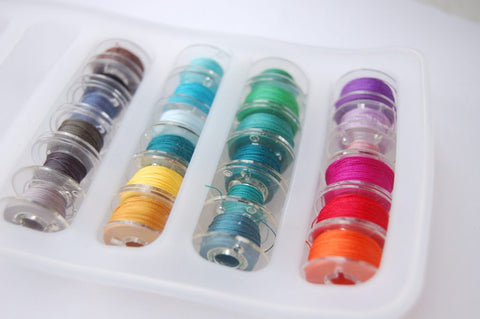One of our most unique and bestselling products is SpoolPods so we wanted to let you know more about them. SpoolPods are a silicone case perfectly designed for storing or transporting your spools of thread, with the matching bobbins too. Clare invented them after getting frustrated trying to find the matching bobbins for her thread when sewing. So she came up with the perfect solution for keeping them together, in an easy to store manner.

Image credit: Coffee Rings Studio
Because they are made from silicone they are flexible, which means you can fit several different brands of thread in the slots. We’ve tried Gutermann, Aurifil, Coats and Wonderfil and they all fit without issue.

The silicone also grips the spools so they don’t fall out (as I tested in this video). You can even roll the whole thing up to pop it into your bag, or you could make our Spoolpod case project to carry up to 4 at a time. They can stack on top of each other, or stand upright next to each other for easy storage. Plus if you buy a 5 pack you get a £3.50 discount, which means one is almost free.

You don’t have to use your SpoolPods for storing thread, it works great for just holding bobbins too. You can fit 6 bobbins per slot, so one SpoolPod will hold 60 bobbins.
Order your SpoolPods here. Plus don’t forget if you join our newsletter you get a 15% discount on your order.
